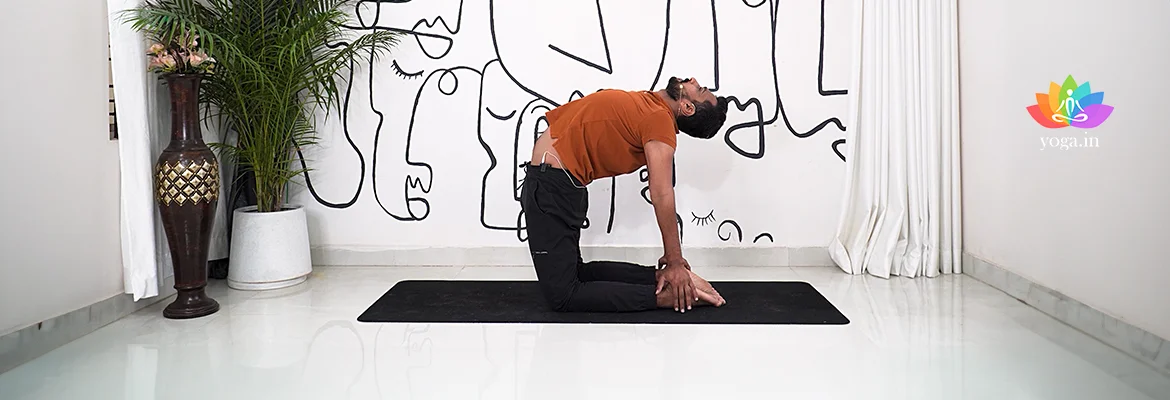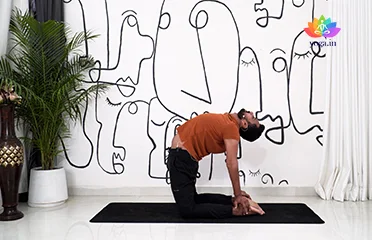First sit in a kneeling posture.
Introduction to the Asana
The Sanskrit name is derived from Ushtra (उष्ट्रासनI) meaning camel and Asana (आसन) meaning a pose.
Step to get in the pose
-
-
Then lift up your buttocks to stand on your knees.
-
Place your toes inside.
-
Keep a distance of five fingers between both the legs.
-
Check the alignments of knees and feet. They should be parallel to each other.
-
Now very gently move backward and hold your heels with your hands.
-
Now very slowly fix your arms on the ground with your fingers out and thumbs inside.
-
Now inhale and raise the torso.
-
The sternum should be in a lifted position, with your body forming a square position.
-
Now hold your breath for up to five to six seconds.
-
Exhale and come back to the normal position.
Common mistakes and pitfalls
-
Mastering Ustrasana can be difficult for beginners and therefore it is important to take things slowly during the initial stages.
-
Not lifting upward.
-
Over-arching neck.
-
Hips and thighs falling back.
Benefits
-
Enhances blood circulation.
-
Improves the flexibility of the entire spine.
-
Stretches and opens the abdomen, chest, quadriceps, and hip flexors.
-
Enhances the functioning of the hips.
-
Tones up the internal organs of the stomach.
-
Improves digestion and eases constipation.
-
Boosts the functions of the liver and adrenal gland.
-
Stimulates the thyroid and thymus glands.
-
Alleviates asthma & thyroid.
-
Reduce fat on the thighs.
-
Makes your body more oxygenated.
-
Relieves anxiety and fatigue.
Contraindication
-
Injury or Surgery in the feet, shoulder, core, thighs, spine, or knees.
-
Sciatica.
-
Lumbago sacral issues.
-
Osteoarthritis.
-
Avoid in case of recent abdominal surgery.




